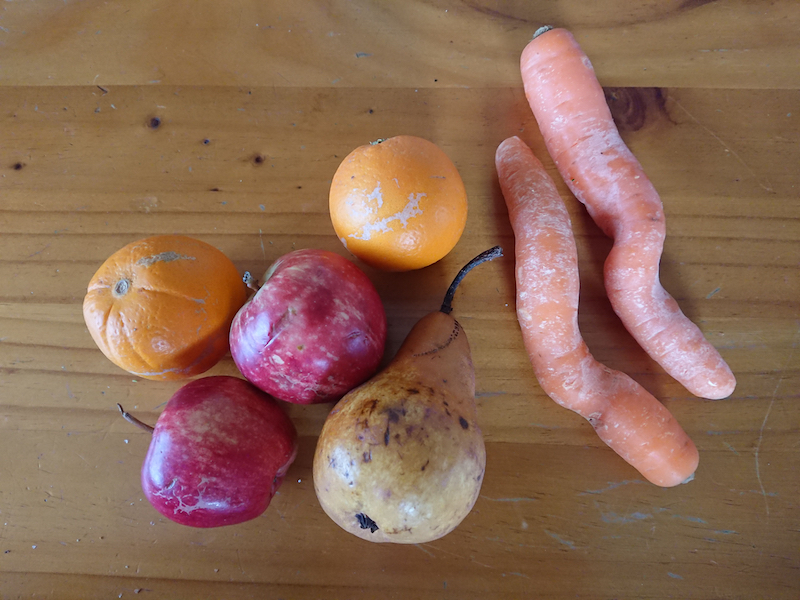Imported food-dependent Singapore consumes a lot and wastes a lot too. A recent study reveals just how much is lost from farm to market, and wasted at the dining table. Mallika Naguran reports.
SINGAPORE, 6 August 2019. A third of Singapore’s population throws away more than 10 % of food weekly. This amounts to S$258 worth of unconsumed food discarded per household annually, an equivalent of 52 plates of the popular nasi lemak (coconut flavoured rice with spicy condiments) dish apparently. Taking the whole nation in consideration, this works out to a whopping S$342 million food value down the rubbish chute. Per year.
A food loss and food waste study by Singapore Environment Council and Deloitte Singapore revealed such findings and more today as they looked closer at the entire fresh food supply chain.
Food loss refers to any food that is lost in the supply chain between the producer to market. For instance, fruit, meat and fish are tossed out during handling, packing and transport. Food waste, instead, takes place when edible food is discarded. This includes uncooked or cooked food not consumed, ugly food (darkened bananas or dented tomatoes, for instance) and food close to ‘best-before’ dates.
Bruised, spotty and warped, but edible, yummy and nutritious. Such knowledge hopefully convinces Singapore to buy ugly fruit and vegetables so as to reduce food waste. Pic by Gaia Discovery.
The consumer finding came from an online survey with 1,002 respondents on their food storage behaviour, purchasing patterns and food handling habits. Food waste is a major concern in the developed island nation – it accounts for one of the top five largest waste streams generated in Singapore.
But not all is lost. The study also found that 20% of the respondents do take steps to prevent wasteful habits by planning ahead or with shopping lists, not being swayed by promotions and consciously not buying more than what is needed.
Jen Teo: Food loss and food waste is preventable. Courtesy: SEC.
Jen Teo, Executive Director of the Singapore Environment Council, hopes the study will feed in learning points. “Food loss and food waste is preventable. This is unsustainable if we are to do nothing to curb and manage the issue. We want our study to create value and wider conversations among multiple stakeholders on food loss and food waste to throw up possible solutions.”
Upstream Food Loss
Now, what about food that is lost before it even gets to the supermarket or grocer? An estimated 393,000 tonnes of food loss occurs during upstream (production) and midstream (processing and transportation) from imported foods and local farms.
Around 342,000 tonnes of such food loss occurs in Singapore. Vegetables and fruits top the food loss list, making up about 167,000 tonnes or 49 per cent. Eggs score the lowest in food loss at about 5,500 tonnes or 1.6 per cent.
Out of two million tonnes of imported food (Singapore imports heavily as it is not self-sufficient foodwise), more than 144,000 tonnes is lost when they land in Singapore.
It is estimated that in a year, around 167,000 tonnes of fruit and vegetables, 25,000 tonnes of fish and seafood, and 5,500 tonnes of eggs are lost. This works out to an average of 62kg of food loss per person each year.
Singapore does produce some food locally although it imports more than 90% of its food. However, there is still food loss. More than 5,000 tonnes of food is lost at production locally, and close to 2,000 tonnes of food is lost during post-harvest handling and storage.
During the processing and packaging of imported and locally produced food items, there is a food loss of close to 75,000 tonnes, and food loss of more than 116,000 tonnes during distribution.
Drivers to Curb Food Loss and Food Waste
From farm to market, Singapore throws out $2.54 billion worth of produce. Knowing the drivers for such loss help create solutions to reduce overall food loss and food waste generated.
Isabella Huang-Loh: Need to close the loop on food loss and food waste. Courtesy: SEC
Singapore Environment Council Chairman Isabella Huang-Loh said: “The study seeks to go beyond plugging gaps in research, but more importantly, to look at drivers behind the loss and waste in the fresh food supply chain to uncover opportunities and innovations on how we can close the loop on food loss and food waste.”
Some of the key drivers of food loss identified in the study are: Poor disease and pest management; over importation of food items; fragmented cold chain management; and inadequate infrastructure.
Eggs have the best crack at reducing loss compared to other food industries. The reasons for that include having a well-developed egg supply chain with efficient flow between the production and distribution channels, automation and disease management technology.
The food loss study involved research as well as interviews with more than 30 key stakeholders in the local food supply chain.
The study on food loss and food waste is in support of Singapore’s agenda of 2019 Year Towards Zero Waste and “30 by 30” goal - produce 30% of Singapore’s nutritional needs locally by 2030.




